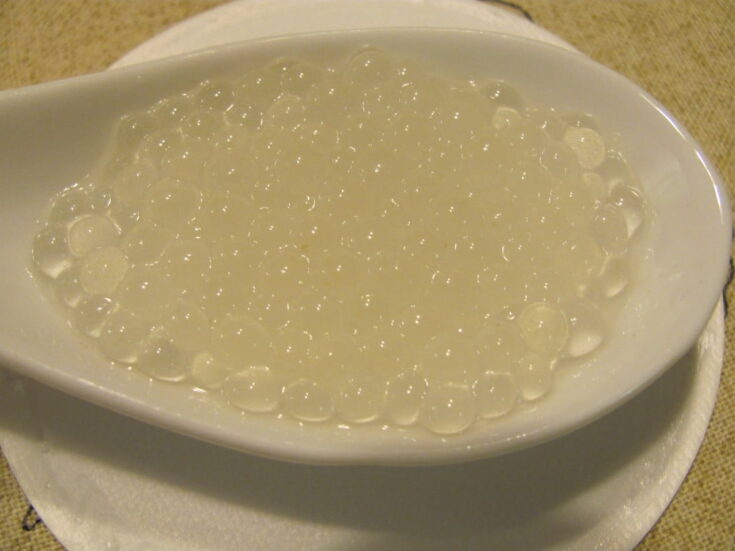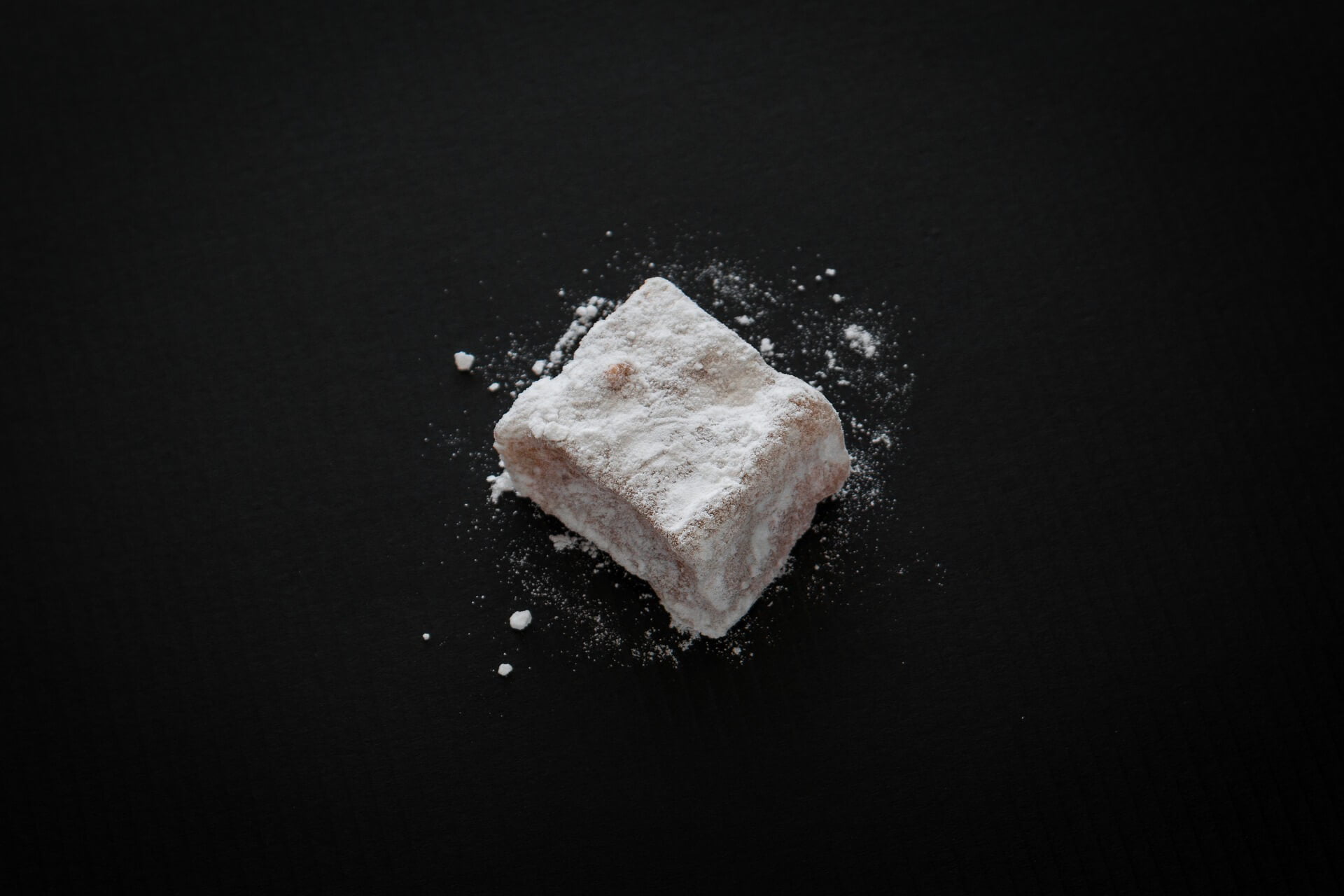There are three different approaches to using this technique; the first is called Basic Spherification, the second is Reverse Spherification, and the third is Frozen Reverse Spherification. The final products are called Caviar and Ravioli; their only difference is their size and texture.
This technique and others can create a new drink, present well-known drinks differently, and challenge people’s perceptions of what these drinks should look or taste like.
For instance, presenting caviar on the side of a drink for unaware people will look like fish caviar, but you can see the surprise reaction on their faces after they taste it. Something like “Wow,” I didn’t expect that. The brain is telling you this is fish caviar, but the senses are experiencing a burst of flavours, and the conflicting information is causing the brain to pause for a second, asking what happened. The caviar is not supposed to taste like that. And this is the sensory experience we are after, and this is the moment our customers will remember and talk about it.
Basic Spherification can be done by using gelatin and almost frozen canola oil or Sodium Alginate and Calcium Chloride; the second way is the most common one.
Sodium Alginate (SA) has a natural origin and is a purified carbohydrate. It is extracted from brown algae and used as a food stabilizer. The typical concentration is between .5 to 1% for the standard specification. When you dissolve Sodium Alginate, don’t put any alcohol into the mixture. Once it dissolves, then you can add alcohol to the mix. If you want to make spheres from alcohol or dairy-rich ingredients, the reverse specification is the best way.
Calcium Chloride is used in the food industry to make cheese; it’s also used in many other applications as a caking agent, stabilizer, or thickener. It’s easily soluble in water. Calcium chloride used with Calcium Alginate creates spheres that gel on the outside and remain liquid in the center.
Sodium Citrate might be needed. If the liquid you use has a low pH level, below 3 -3.5, you need to add Sodium Citrate to bring it between 4 and 7. The low acidity level might prevent the spherification process, and an alkaline solution with a pH above eight might be required.
- To make the sodium alginate mixture, hydrate the SA in the liquid for a few minutes. Then, use a handheld immersion stick blender to dissolve it. While you are mixing it, try not to incorporate too much air. To remove the bubbles, leave it in the fridge for an hour or overnight and then strain it.
- Use a catheter syringe with a broader tip opening or a squeegee bottle. This is the cheapest way, but other tools are available to create proper spheres.
- For Ravioli, use a negligible cooking measuring spoon. Dip the spoon with the SA in the CC bath, flip it over, and wipe the spoon before making a new Ravioli. The outside membrane forms in about 2-3 minutes.
- Use a slotted spoon to remove the caviar from the Calcium Chloride bath and rinse it into another vessel filled with cold, clean water. Strain it and store it in the fridge. The liquid inside the spheres starts slowly to jellify in about 20-30 minutes.
The steps of adding the ingredients are Sodium Citrate-dissolve it, Sodium Alginate – the same, and then alcohol.
Reverse Spherification can be used to create Ravioli and caviar if you need them to stay liquid inside for a longer time or the next day.
This technique can be done using Xanthan gum, sodium alginate, calcium chloride, or calcium lactate glucose—the latter has a milder taste than calcium lactate and calcium chloride.
It is called reversed Spherification because the sodium ionizing bath is the last step of the process instead of the basic one.
- Prepare the alginate bath by mixing or blending 2.5g SA in 500 ml water. I prefer the distilled one.
- Put in the fridge until it clears up.
- Next, add Calcium Lactate Gluconate—2% of the flavoured base—to another bowl and mix to dissolve it.
- Add Xanthan gum and blend it again until dissolved.
- Put in the fridge for a few hours for the bubbles to dissipate, or if in a hurry, strain in it through a fine-mesh strainer. Less incorporated air is an important part of achieving a better round shape.
- The order is a bowl with calcium lactate glucose mix, a second bowl with an alginate bath, and the third one with clean distilled water for rinsing.
- Use a cooking measuring spoon to scoop the CLG mix from the bowl. Dip the bottom of the spoon in the alginate bath and slowly flip the spoon over. Make sure the Ravioli don’t touch each other, and also move the spoon around the spheres in the water without touching them.
- When they are done, use a slotted spoon for 2-3 minutes to put them in the clean water bowl.
- After each step, use a paper napkin to clean the spoons to prevent cross-contamination, especially between the alginate bath and the Calcium Lactate Gluconate base.
- Rinse and use or store in a flavouring liquid in the fridge. The flavouring agent can be any other flavour or alcohol, infusing them while stored.
Frozen Reverse Spherification –
- The only difference is that you must put the Calcium Lactate Gluconate mixture in some mould.
- Freeze it, and after that, dip it into the alginate bath to form the spheres.
- This method can be used with items which can freeze and are not suitable for high-proof alcohol.
Here is how to make Lychee caviar using Basic Spherification. The process is all the same for any other base using this method, except the amount of SA needs to be adjusted accordingly to the volume of the liquid.
Lychee Caviar

Lychee caviar made by using Direct Spherification.
Ingredients
- 240 ml lychee juice
- 15 ml grenadine
- 30 ml Raspberry puree
- 1.1 gr Sodium Citrate
- 2 gr or 0.8% Sodium Alginate
- 5 gr Calcium Chloride
- 1 L water - I used distilled
- Top with orange essential oil
Instructions
- Dissolve Sodium Citrate into the liquid.
- Blend the mixture with 2 g of sodium alginate.
- Let it rest to get rid of the air bubbles.
- You can keep it overnight in the fridge for the bubbles to dissipate or slowly fine-strain it to eliminate as many bubbles as possible.
- Another option is to mix the SA with a third of the mixture.
- Bring it to a boil, and let it cool to room temperature. Add the rest and blend again.
Sodium Alginate Solution
Calcium Chloride Bath
Mix lychee juice and sodium alginate in an immersion blender. After dissolving SA, fine strain and put the mixture in the fridge for a few hours or overnight to eliminate any remaining air bubbles.
Dissolve 5 g of calcium chloride into 1L of cold water in another vessel.
To make Caviar, use a catheter syringe with a wider tip opening or a squeegee bottle. Drop by drop, squeeze the liquid gently over the bath from about 11/2″ distance.
To make Ravioli:
Use a small cooking measuring spoon to scoop the SA mix, dip the spoon into the CC bath, and flip it over. Wipe the spoon before making the new Ravioli. The outer gel membrane takes about 2-3 minutes to form.
Use a slotted spoon to remove the Ravioli/Caviar from the Calcium Chloride bath and rinse it into another vessel filled with cold, clean water—strain and store in the fridge. The liquid inside the spheres starts to jellify slowly in about 20-30 minutes.
Top with orange essential oil.
Notes
pH is 4.50. Hydrate SA for about 5 min after SC is dissolved.
Nutrition Information:
Yield:
1Serving Size:
1Amount Per Serving: Calories: 386Total Fat: 15gSaturated Fat: 1gTrans Fat: 0gUnsaturated Fat: 13gCholesterol: 0mgSodium: 53mgCarbohydrates: 66gFiber: 6gSugar: 54gProtein: 2g
This data was provided and calculated by Nutritionix.




I am truly happy to read this webpage posts which includes lots of useful facts, thanks for providing
these data.
my blog … https://Supportvavada.populiser.com/